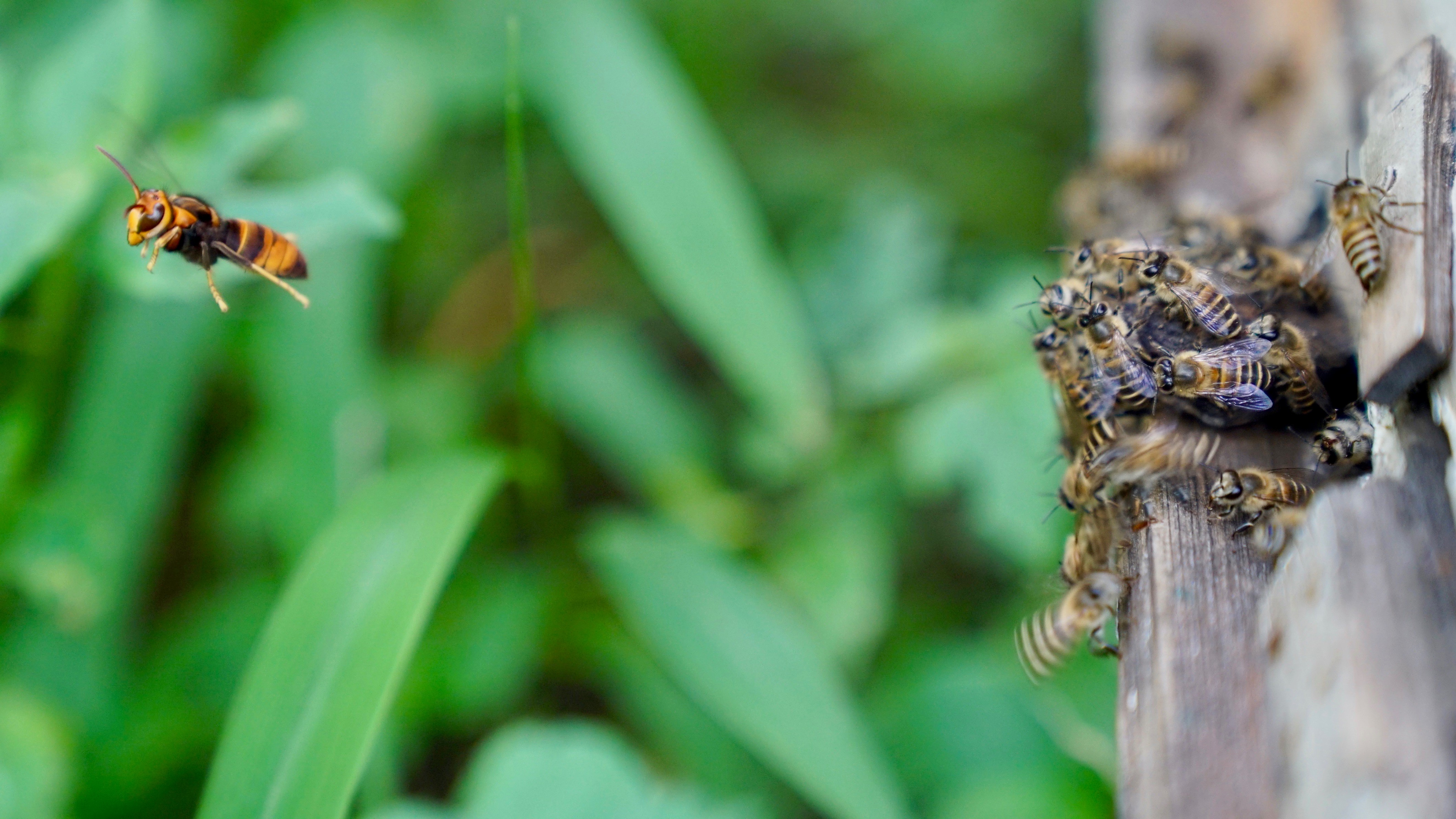But over time, predator-prey evolution has equipped some honey bees with a potent defense mechanism against such an attack. A signal from colony guard bees lets hornets know that their attack plans have been exposed, and also sends an alarm across the bee colony communicating that urgent reinforcements are needed due to the impending danger. This “I see you” (ISY) visual signal involves guard bees shaking their abdomens laterally and increases as the threat intensifies.
Hornets are ferocious bee predators that have invaded multiple countries around the world. Yet even the giant “murder” hornets that have generated much concern of late have come to recognize the ISY signal as a warning to back off. They are well aware that ISY can lead to a counter attack in which a mass of bees surrounds the hornet, forming a “heat ball” with a deadly mix of heat, carbon dioxide and stinging for the hornet inside.
University of California San Diego biologists studying Asian honey bees (Apis cerana) and hornets (Vespa velutina) have produced new research that deconstructs this ISY signal and shows for the first time that it is visually driven and contagious across the bee colony. The findings are described Dec. 7, 2020 in the Journal of Animal Ecology. A key point of the new study is that the bees can only succeed if they have sufficient numbers to effectively execute a heat ball.
“The beauty of the ISY signal is that hornets are only deterred if enough defending bees quickly gather to synchronously produce the signal, thereby showing the hornet that further attack is futile,” said study senior author James Nieh, a professor in the Section of Ecology, Behavior and Evolution in UC San Diego’s Division of Biological Sciences.
But how to gather this defense? Nieh says the ISY signal is contagious and attracts other defenders who immediately copy the signal and rush towards the signaler, even if they cannot directly see or sense the predator.
“Hornets give off smell and sound but we found that the visual of a hornet alone can elicit the signal, which was not known,” said Nieh. Previous speculation held that guard bees might produce a pheromone to alert others in the colony of the impending danger. “Using just a contagious visual signal is better because guards who are too far away to smell or hear the hornet can immediately head towards the threat. In some ways, it’s like a fast chain reaction,” said Nieh.
Nieh says the concept links to the issue of “fake news” since animal communication often contains errors, and a false ISY alarm could rapidly spread within the colony.
One solution to the problem of false information spread is that the bees are very selective about what they consider a true threat. Using an iPad to display videos, researchers Shihao Dong, Ken Tan and Nieh found that the visual appearance and motion of the hornet alone could trigger ISY signals. Visual displays of a harmless butterfly, on the other hand, elicited no response. The second and most important safeguard against false reporting is that bees are even more choosy about what they consider to be a real ISY signal.
“We played back videos of bees performing ISY signals at different speeds, but only the correct bee image at the right speed caused other bees to respond. This helps keep the signal spread honest,” said Nieh.
It is still true that a bee could occasionally “cry wolf” but Nieh thinks that evolution has limited these errors because nestmates must work together to fight these powerful predators and colonies prone to errors would suffer. Nieh and his colleagues are now testing the details of the visual cues behind ISY. They are developing animations that display related visuals that can be tested, such as whether a harmless butterfly can be depicted as threatening, or whether offshoots such as a hornet displayed without wings could be enough to trigger ISY.
Nieh believes that the findings provide a cautionary tale about fake news for all of us.
“Individuals in a honey bee colony are completely interdependent. They can’t go out and make it on their own. Cooperation is paramount, especially when faced with a large, heavily armored predator like hornets,” said Nieh. “A couple of hornets can kill thousands of bees in a single day. Yet through teamwork that correctly produces synchronized, massed ISY signals, they can get the hornet to back off without harming a single bee. Maybe that’s a lesson for us all.”
The research was supported by the China Postdoctoral Science Foundation (BX20180354 and 2019M653514), the CAS 135 program (2017XTBG-T01), the China National Research Fund (31770420), the Center for Plant Ecology, Core Botanical Gardens, the Chinese Academy of Science and the Chinese Academy of Sciences President’s International Fellowship Initiative (2016VBA035).


